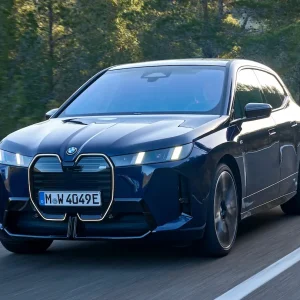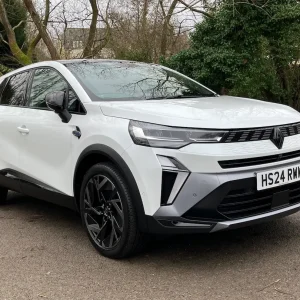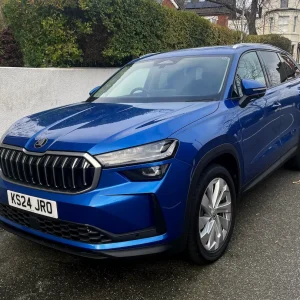The Mazda CX-5 was one of the early entries to the now booming SUV segment and as a result it has been a big success for the Japanese carmaker, capitalising on the initial demand to rack up 34,000 sales.
It’s a vital contributor to Mazda’s success here in the UK and with so many new competitors entering the marketplace since the CX-5 was first launched in 2012, an update was essential to keep the SUV relevant.
The original CX-5 was a milestone car for Mazda. It was the first to showcase the firm’s latest Kodo design language and also debuted the first generation of SkyActiv technology. This latest model is far less revolutionary, but discreetly hints at what’s to come in 2018, when the next stage of both design and SkyActiv will be revealed.
Improved refinement
One of the Mazda CX-5’s standout features has always been its design and this latest version introduces a number of small, yet noticeable changes, which further enhance the car’s eye-catching looks.
It’s a car that will never look out of place at the local golf course or business-parking terminal and inside gets a boast in premium appeal too, offering a great mix of design flair and refinement. Overall fit and finish is very good and the new detailing around the cabin materials is definitely worthy of praise.
One of the biggest changes to the current CX-5 is the amount of effort made by the engineers to reduce the noise inside the cabin; they’ve even sacrificed vehicle weight, adding up to 50kg to increase the thickness of the windscreen as well as other materials. The end result is very good indeed and little noise can be heard while on the move, even at high speeds.

Disappointingly, there’s not as much standard onboard safety kit as we’ve come to expect in this segment and you can’t help but feel that the technology hasn’t moved forwards enough in this latest car to keep up with the market.
The 7in screen is too small and the controls and functions, although intuitive, don’t feel as modern as some rival systems. There’s also no Apple CarPlay or Android Auto on offer, and no voice control functionality or in-car Wi-Fi capabilities either.
However, updates to the adaptive cruise control system now bring the car to a complete stop in traffic and a new head-up display – gone is the cheap-looking piece of plastic behind the steering wheel – is much improved and a welcome addition.
Diesel still important
Mazda has stayed resolutely in the diesel camp over the past couple of years and despite the fuel’s recent fall from grace, 84% of sales of the CX-5 are expected to be diesel.
The 2.2-litre engine we’re testing here is available in two power outputs, 150hp and 175hp, and it’s the former that’s likely to be the most appealing for fleets. Headline figures include CO2 emissions of 132g/km and 56.5mpg combined, both average compared with rivals, and, officially, the 0-62mph sprint can be achieved in 9.4 seconds.
On the road the car’s neat handling and accurate steering make it easy to drive; there’s enough pull from the engine to gain speeds quickly too and the CX-5 tackles corners at speed with confidence and little noticeable bodyroll.

Despite its roomy dimensions (which remain unchanged in this latest update), the car feels light and compact on the road and proved easy to manoeuvre and drive in the city. Comfort levels on the motorway also impressed, although we’d avoid the 19in alloys as they made the ride too firm.
This latest model also gets Mazda’s G-Vectoring Control system that works by adjusting engine output in response to the steering to help achieve smoother, more efficient load transference during cornering for better grip and responsiveness. The system also minimises the amount of corrective steering needed by the driver, which translates into a more relaxed driving experience behind the wheel.
New kit
The trim line-up in the CX-5 remains unchanged with just two options available; the top-of-the-range Sport Nav is still predicted to be the most popular.
There’s a £3,000 difference between the two and for that extra cash drivers get a variety of kit including keyless entry, a Bose surround sound system, 19in alloys, an automatic tailgate, electric memory seats, heated steering wheel, the aforementioned head-up display and a reversing camera – good value for money in our book.

Residual values for this latest model see an uplift too, which helps offset the price rise of £200?900 (depending on the model you choose). However, because of the Mazda’s average running cost figures, whole-life costs are competitive rather than class-leading, but it’s a compromise many may consider given the car’s eye-catching looks and premium appeal.
To say that Mazda has high expectations for this latest CX-5 would be an understatement. In its first year the new SUV is expected to achieve 8,000 sales, making it the firm’s biggest-selling model here in the UK, with 46% heading into fleet.
It’s got all the right tools to do the job, though, and is an ideal car for those seeking a premium vehicle but who want a little more value for money. We just wish Mazda had included a few more technological innovations so that this new car didn’t already feel slightly out of date.
| P11D Price: £28,440 |
| On sale: 2017 |
| Residual value: 42.3% |
| Fuel: £5,681 |
| Service, maintenance & repair: £2,597 |
| Cost per mile: 59.8p |
| Fuel consumption: 56.5mpg |
| CO2 (BIK Band): 132g/km (28%) |
| BIK 20/40% per month: £133/£265 |
| Boot space: 506 litres |
| Engine size/power: 2191cc/150hp |





